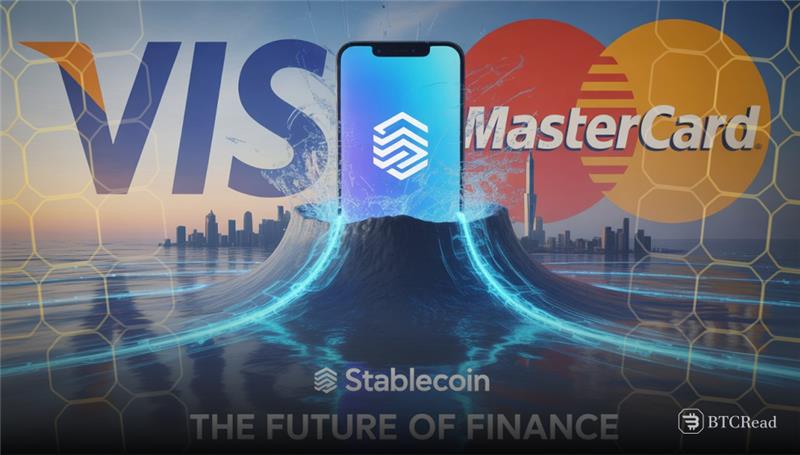Crypto and stablecoin momentum have created greater uncertainty for the U.S. credit card duopoly, probing its stability following decades of dominance. Visa and Mastercard officials, speaking after recent quarter reports, downplayed stablecoin threats despite legislation potentially accelerating the adoption of digital coins.
These dollar-pegged coins could potentially allow retailers or banks to go around current payment networks, affecting both volumes of transactions and network profitability.
Visa’s profit rose 8% to $5.3 billion, and Mastercard’s rose 14% to $3.7 billion, both higher than analysts’ forecasts. The two processors process an estimated 70% of U.S. transactions, according to the Nilson Report, and continue to lead despite new payment technologies.
Their long-time consistency and broad merchant acceptance once allowed them to withstand disruptions from services like peer-to-peer payments from PayPal and Venmo. Visa shares rose 31% in the past year, and Mastercard climbed 24%, both at lofty valuations.
Circle Internet Group, one of the operators of stablecoins, has a market value of over $40 billion following the June public listing. These results show investor optimism about the adoption of stablecoins as an upcoming market share threat to the traditional card network market.
Stablecoin valuations drive up payment sector tensions
Visa and Mastercard took around $95 billion of merchant swipe fees in the last fiscal year, splitting income with banks and partners. Visa earned 6.6 cents on the quarter’s volumes, down from nearly 9 cents around ten years earlier, as pricing pressure persisted.
Mastercard’s swipe fees for the year ended averaged 7.3 cents, down from about 8 cents previously, though there were quarter-to-quarter fluctuations because of the movement of currencies.
Both companies point to negligible adoption of stablecoins compared to Visa’s $15 trillion-per-year processing volumes, limiting business impact in the short term.
Executives also argue stablecoins offer greater benefits in countries with volatile fiat currencies rather than mature U.S. markets. Nevertheless, falling per-transaction fees leave room for exposure, particularly as large merchants consider payment token adoption as a means to minimize processing costs.
Visa and Mastercard offset declines in revenues with services like consulting, fraud protection, and analytics, continuing growth despite changes in payment landscapes.
As adoption of stablecoins picks up significantly, Circle’s rosy valuation may presage real disruption, compelling payment card networks to move far quicker to compete.







